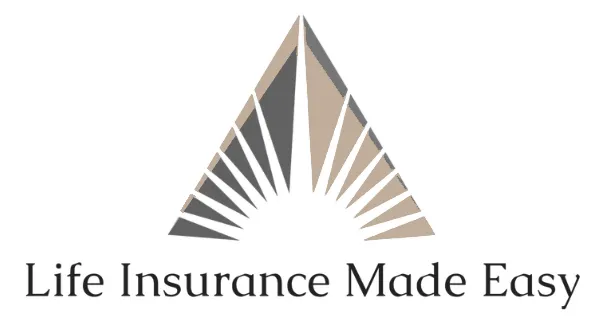
Understanding Decreasing Term Life Insurance: Is It the Right Choice for Your Financial Needs?
Have you ever thought about decreasing term life insurance? It's a special kind of policy that changes as your financial situation does. But is it the best choice for you and your family? Let's explore decreasing term life insurance and see if it fits your financial plans.
Key Takeaways
Decreasing term life insurance provides coverage that reduces over time, often aligning with the declining balance of a mortgage or other debt.
The premiums remain constant throughout the policy, making it a cost-effective option for protection during specific life stages.
Understanding the coverage reduction schedule and policy duration options is crucial in determining if decreasing term life insurance is the right fit.
This policy type can be particularly beneficial for homeowners seeking to protect their family's financial security as their mortgage balance decreases.
Evaluating the advantages and limitations of decreasing term life insurance can help you make an informed decision about your insurance needs.
What Is Decreasing Term Life Insurance
Decreasing term life insurance is a special kind of life insurance. It has a death benefit that goes down over time. Unlike other life insurance, where the coverage stays the same, this type goes down as your financial needs do. For example, it can match the amount you owe on a mortgage.
Key Features and Basic Principles
The main thing about decreasing term life cover is that the death benefit goes down. As time goes on, the coverage you get from the insurance goes down too. This is usually because your financial needs are going down, like when you pay off a mortgage. Because of this, the premiums for this insurance are often lower than for other types.
How Coverage Decreases Over Time
The amount of coverage in a decreasing term life insurance policy follows a set plan. This plan is often made to match the way you pay off a mortgage or other debts. It makes sure the death benefit is right for your remaining financial needs over time.
Primary Benefits for Policyholders
Aligns coverage with decreasing financial obligations, such as a mortgage balance
Offers lower premiums compared to level term life insurance
Provides protection and peace of mind for the policyholder's loved ones
Understanding the main points and benefits of decreasing term insurance policy helps you decide if it's right for you. It's about finding the right coverage for your financial situation and goals.
How Decreasing Term Life Insurance Differs from Level Term Coverage
Life insurance comes in many forms, like decreasing term and level term. Both protect your loved ones financially, but they differ in important ways.
The main difference is in how the coverage amount changes. Decreasing term assurance has a death benefit that goes down over time. This matches the decrease in a mortgage or debt. On the other hand, level term insurance keeps the death benefit the same, no matter how old you get.
Premium Structure: Decreasing term life insurance costs less at first. This is because the death benefit goes down, making it less risky for the insurer.
Policy Duration: Decreasing term policies usually last as long as a mortgage. Level term coverage comes in different lengths, like 10, 15, or 20 years.
Flexibility: Level term life insurance is more flexible. You can change your coverage or switch to a permanent policy if needed. Decreasing term assurance is less flexible.
Knowing the differences between decreasing term insurance quotes and level term coverage helps you choose the best policy. This choice depends on your financial goals and protection needs.
"Choosing the right life insurance policy can make all the difference in providing for your family's future security."
The Mechanics Behind Decreasing Term Insurance Policies
Understanding decreasing term life insurance is crucial. It covers how premiums and coverage change over time. Let's look at how these policies work and the options you have.
Premium Structure and Payment Options
Premiums for decreasing term life insurance start high and go down. This matches the decreasing insurance term length. You can pay monthly, quarterly, or yearly, making it easier to manage your budget.
Coverage Reduction Schedule
The coverage reduction schedule is key to these policies. It shows how the death benefit goes down over time. This usually happens as your financial needs, like a mortgage, decrease. Knowing this schedule helps keep your coverage right for you.

Policy Duration Choices
You can pick the policy duration that suits you best. Options range from 10 to 30 years. Shorter terms often have decreasing term insurance rates that are lower. This lets you adjust coverage as your financial situation changes.
Learning about decreasing term life insurance helps you choose wisely. It ensures your coverage meets your financial and protection needs.
Ideal Candidates for Decreasing Term Life Insurance
Some people and situations are perfect for decreasing term life insurance. It's great for homeowners with mortgages, parents with kids, and anyone with financial needs that lessen over time. Let's dive into who these people are.
Homeowners with Mortgages
Decreasing term life insurance is a top pick for homeowners with mortgages. As your mortgage goes down, your policy coverage matches it. This way, your family won't face debt if you pass away too soon.
Parents with Dependents
Parents with young kids or dependents benefit a lot from this insurance. It protects your family's finances, ensuring they're cared for if you're not there. As your kids grow up and become independent, the policy's value decreases too, saving you money.
Those with Decreasing Financial Obligations
People with debts that go down, like car loans or personal debts, find this insurance useful. It's designed to match your debt repayment schedule. This means you get the right protection without paying too much over time.
Knowing who fits best with decreasing term life insurance helps you decide if it's right for you. It's important to think about your personal situation and what you need to choose the best life insurance.
"Decreasing term life insurance is a smart choice for those with financial obligations that diminish over time, ensuring your loved ones are protected without overpaying for coverage."
Matching Decreasing Term Insurance with Mortgage Protection
As a homeowner, keeping your family safe financially is key. A smart move is to match your decreasing term life insurance with your mortgage. This way, your coverage grows with your needs, giving you peace of mind.
Aligning Coverage with Mortgage Balance
Decreasing term life insurance fits well with mortgage protection. It decreases over time, like your home loan balance. By matching your decreasing term insurance policy to your mortgage, you ensure your family can pay off the debt if needed.
Benefits for Homeowners
Ensures your loved ones are protected if you pass away unexpectedly
Provides a tax-free death benefit to pay off the mortgage, freeing your family from this financial burden
Offers a more cost-effective solution compared to level term life insurance, as the coverage decreases alongside your mortgage balance
Provides peace of mind knowing your home will remain in your family's hands
Aligning your decreasing term life insurance definition with your mortgage is a wise financial choice. It protects your family's future. By customizing your coverage, you can be sure your home and loved ones are safe, no matter what life brings.
"Protecting your family's financial security is the top priority when it comes to life insurance. Decreasing term coverage is a strategic way to ensure your mortgage is taken care of, no matter what happens."
Cost Considerations and Premium Rates
Understanding the cost of decreasing term life insurance can be tough. But knowing the factors that affect it can help you choose wisely. Unlike level term life insurance, where costs stay the same, decreasing term life cover costs change over time.
The main things that affect the cost are the initial coverage, how it decreases, and the policy's length. Generally, more coverage and longer terms mean higher costs. But, the coverage decrease can lead to lower costs than level term life insurance.
Here's what you might save:
Decreasing term life insurance premiums are often 10-30% lower than level term, especially for longer terms.
Buying the policy when you're younger can also lower your premiums, as you're seen as less risky.
Your health, lifestyle, and family history also influence your premium rates.
"Decreasing term life insurance can be a cost-effective solution for those seeking protection that aligns with their changing financial obligations, such as a mortgage."
To find the best deal, compare quotes from different providers. The right decreasing term life insurance policy can offer the coverage you need without breaking the bank.
Advantages and Limitations of Decreasing Term Coverage
Decreasing term policies have both good and bad sides. It's important to know these to make the right choice for your money and goals.
Primary Benefits
One big plus is that premiums can get cheaper over time. This makes it a good pick for those watching their budget. It also fits well with decreasing debts, like a mortgage.
Potential Drawbacks
But, there are downsides too. The coverage amount goes down, which might not be enough as your life changes. This could be a problem if your financial needs grow.
Another issue is that rates might go up as you get older. Even if you start with lower premiums, they can jump up before the policy ends. This could make it harder to afford.
Choosing decreasing term insurance needs careful thought. Look at your needs, money situation, and future plans. This way, you can decide if it's right for you.

Comparing Decreasing Term Insurance Providers
Choosing the right provider for decreasing term life insurance is key. Look at important factors that affect the cost and length of your coverage.
First, compare the decreasing term insurance cost from different providers. Make sure the premiums fit your budget. Also, check the decreasing insurance term length options. This will show how long your coverage lasts.
Customer service and claims processing: Choose insurers known for good customer support. This is important when you need to file a claim.
Financial stability: Check the financial strength and credit ratings of potential providers. This ensures they can meet their long-term promises.
Policy features and customization: Look for policies that can be adjusted or extended if your needs change.
"Selecting the right decreasing term life insurance provider can provide valuable peace of mind and financial protection for your family."
By considering these factors, you can find a policy that fits your needs and budget. This ensures your loved ones are protected.
Application Process and Underwriting Requirements
Getting decreasing term life insurance is easy and fast. It's made to give you the coverage you need quickly. The underwriting checks your health and risk to make sure the policy fits you.
Medical Examination Requirements
You might need a medical check for this insurance, based on how much coverage you want and your age. It's a simple test that looks at your height, weight, blood pressure, and basic blood and urine tests. This helps the insurance company figure out your health and set your premium.
Documentation Needed
You'll also need to give the insurance company some documents. This includes your ID, like a driver's license or passport. They also want to know about your money situation, like your income, debts, and any life insurance you already have. This helps them make sure the policy meets your financial needs.
FAQ
What is decreasing term life insurance?
Decreasing term life insurance is a policy where the coverage amount goes down over time. The cost of the policy stays the same. It's great for covering financial needs that go down, like a mortgage.
How does the coverage amount decrease in a decreasing term life insurance policy?
The coverage in this policy goes down each year or month. It follows a set schedule. This matches the decrease in a mortgage or other big financial needs.
What are the primary benefits of decreasing term life insurance?
The big pluses are lower costs than other types, matching coverage with decreasing needs, and saving money over time.
How does decreasing term life insurance differ from level term coverage?
The main difference is the coverage amount. It stays the same in level term but goes down in decreasing term. This affects the cost and benefits of each policy.
How are the premiums structured in a decreasing term life insurance policy?
The premiums stay the same throughout the policy. Even though the coverage goes down, the cost doesn't change. This makes planning easier for policyholders.
Who are the ideal candidates for decreasing term life insurance?
People with decreasing financial needs are best. This includes those with mortgages, parents, or anyone with debts that go down over time.
How can decreasing term life insurance be used for mortgage protection?
It's great for protecting a mortgage. The coverage amount matches the mortgage balance as it goes down. This ensures the mortgage is paid off if the policyholder dies, giving financial security to the family.
What factors influence the cost of decreasing term life insurance?
Several things affect the cost. These include age, health, coverage amount, policy length, and the insurance company's rules. Decreasing term policies usually cost less than level term ones.
What are the potential advantages and limitations of decreasing term life insurance?
The main benefits are lower costs, matching coverage with decreasing needs, and saving money. But, it might have less flexibility, not always enough coverage, and changing insurance needs over time.
What are the typical application and underwriting requirements for decreasing term life insurance?
You'll need to give personal and health info. You might also have to take a medical exam. The insurance company will use this to decide how much coverage you get and what it costs.




